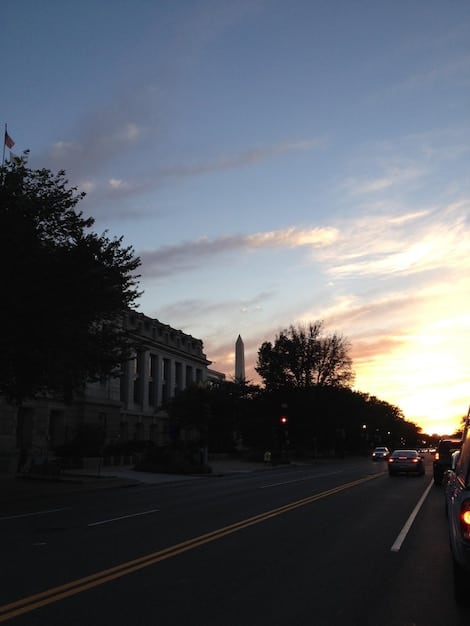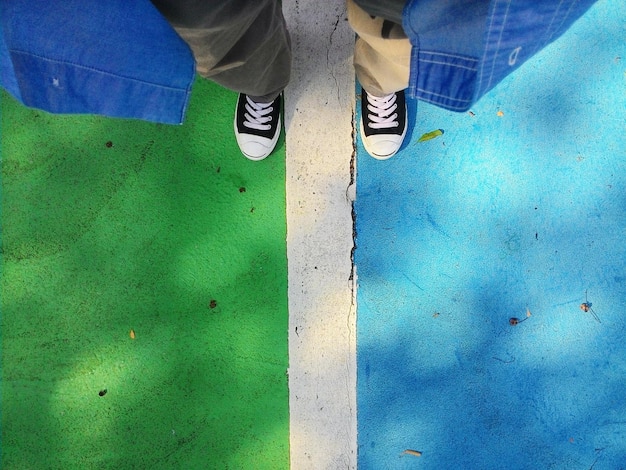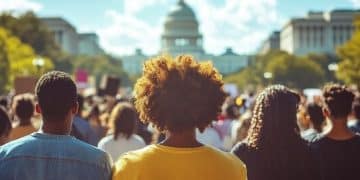2025 Supreme Court: How Rulings Will Reshape Affirmative Action

The 2025 Supreme Court rulings are poised to significantly impact affirmative action debates by potentially reinforcing or challenging the precedent set in Students for Fair Admissions v. Harvard, thereby reshaping policies related to diversity in college admissions and employment sectors.
The legal landscape of affirmative action is bracing for potential shifts as the Supreme Court’s decisions in 2025 are anticipated to significantly alter the discourse. How exactly will the **2025 Supreme Court rulings impact affirmative action debates**, and what are the possible ramifications for diversity initiatives across the United States?
Understanding Affirmative Action Before 2025
Before delving into the anticipated impact of the 2025 Supreme Court rulings, it’s crucial to understand the historical and legal context of affirmative action. This concept has evolved significantly over the decades, shaped by various court decisions and societal shifts.
The Evolution of Affirmative Action
Affirmative action policies emerged in the 1960s as a means to address historical and systemic discrimination against marginalized groups, particularly racial minorities and women. These policies aimed to ensure equal opportunities in education and employment.
Key Legal Precedents
Several Supreme Court cases have defined the boundaries of affirmative action. Landmark cases like **Regents of the University of California v. Bakke** (1978), **Grutter v. Bollinger** (2003), and **Gratz v. Bollinger** (2003) have shaped the permissible scope of affirmative action. Most recently, the **Students for Fair Admissions v. Harvard** (2023) decision has had significant ramifications.

- Regents of the University of California v. Bakke (1978): This case prohibited strict quotas but allowed race to be considered as one factor among many in college admissions.
- Grutter v. Bollinger (2003): The Court upheld the University of Michigan Law School’s affirmative action policy, stating that a narrowly tailored use of race in admissions decisions was permissible to further a compelling interest in obtaining the educational benefits of a diverse student body.
- Gratz v. Bollinger (2003): In contrast, the Court struck down the University of Michigan’s undergraduate affirmative action policy, which awarded points to applicants based on race, finding it was not narrowly tailored.
These rulings established a complex framework, allowing race to be considered as one factor among many but prohibiting quotas or policies that give race too much weight. This delicate balance has been central to affirmative action debates for decades. The forthcoming rulings of 2025 will likely either reinforce or challenge this existing precedent, and perhaps even chart a new course.
Potential Scenarios for the 2025 Supreme Court Rulings
As we look ahead to 2025, it’s essential to consider the potential scenarios that the Supreme Court rulings might bring. These scenarios could range from reaffirming current standards to imposing stricter limitations on affirmative action.
Scenario 1: Reaffirming Current Standards
One possibility is that the Court could reaffirm the existing standards, maintaining the delicate balance established in previous cases. This would mean that race could still be considered as one factor among many, but quotas and policies that give race undue weight would remain prohibited.
Scenario 2: Imposing Stricter Limitations
Alternatively, the Court could impose stricter limitations on affirmative action. This could involve prohibiting the consideration of race altogether or requiring a much higher level of scrutiny for policies that take race into account.

Scenario 3: Overturning Precedent
The most significant scenario would involve the Court overturning key precedents, effectively ending affirmative action as it currently exists. This could have far-reaching consequences for diversity in education and employment. The potential impacts include:
- Decreased diversity in higher education: A ban on affirmative action could lead to a decline in the enrollment of underrepresented minority students at selective colleges and universities.
- Reduced access to opportunities: Minority groups may face increased barriers to accessing educational and employment opportunities, potentially exacerbating existing inequalities.
- Legal challenges and uncertainty: New laws and regulations could face legal challenges, leading to ongoing uncertainty and litigation.
Foreseeable Impacts on Affirmative Action
Predicting the exact outcomes of the 2025 Supreme Court rulings is challenging, but understanding the potential impacts on several critical areas is essential. The ramifications could be felt across higher education, employment, and broader social equity initiatives.
Impact on Higher Education
One of the most immediate impacts could be seen in higher education. Selective colleges and universities that have relied on affirmative action to promote diversity may need to revise their admissions policies significantly. The effects could include:
Changes in admissions policies
Institutions may need to adopt race-neutral admissions policies, focusing on factors such as socioeconomic background or demonstrated resilience.
Decline in Minority Enrollment
Studies have shown that bans on affirmative action can lead to a decline in the enrollment of underrepresented minority students.
Impact on Employment Sector
The employment sector could also experience significant changes. Affirmative action policies in hiring and promotion practices might be challenged, potentially affecting diversity in the workplace. Effects could include:
Revisions to hiring practices
Companies may need to re-evaluate their diversity and inclusion programs to ensure compliance with the new legal standards.
Diversity and Inclusion Programs
The focus may shift to broader diversity and inclusion initiatives that do not explicitly consider race.
Potential Challenges
Businesses may face legal challenges if their diversity policies are perceived as discriminatory.
Potential Responses to the Supreme Court Rulings
In anticipation of the 2025 Supreme Court rulings, various stakeholders are preparing potential responses. These responses could include legislative actions, policy adjustments by educational institutions and employers, and grassroots activism.
Legislative Actions
Congress or state legislatures could pass laws to either reinforce or counteract the Court’s decisions. For example, lawmakers could seek to codify affirmative action principles into law or enact measures to prohibit the consideration of race in admissions and hiring.
Policy Adjustments
Educational institutions and employers may adjust their policies to align with the new legal landscape. This could involve adopting race-neutral admissions policies, focusing on socioeconomic diversity, or implementing broader diversity and inclusion programs.
Advocacy and Activism
Advocacy groups and grassroots movements will likely play a crucial role in shaping the public discourse and pushing for policy changes. These groups may organize protests, lobby lawmakers, and launch public awareness campaigns.
Legal Challenges
Any new laws or regulations enacted in response to the Supreme Court rulings could face legal challenges, leading to further litigation and uncertainty.
The Role of Socioeconomic Factors
As affirmative action debates evolve, the role of socioeconomic factors has gained increased attention. Advocates of socioeconomic-based affirmative action argue that focusing on economic disadvantage can promote diversity while addressing broader inequalities.
Socioeconomic Diversity
Policies that consider socioeconomic factors can help level the playing field for students and job applicants from disadvantaged backgrounds, regardless of their race.
Addressing Inequality
By focusing on economic hardship, affirmative action policies can address broader inequalities and promote social mobility.
Potential Benefits
Research suggests that socioeconomic-based affirmative action could lead to a more diverse student body and workforce, while also addressing economic disparities.
Navigating the Future of Affirmative Action
As the nation awaits the 2025 Supreme Court rulings, the future of affirmative action remains uncertain. However, by understanding the potential scenarios, impacts, and responses, stakeholders can better navigate the evolving legal landscape.
Continued Dialogue
Open and inclusive dialogue is essential to address the complex issues surrounding affirmative action and diversity. Engaging in conversations with diverse stakeholders can help identify common ground and promote understanding.
Innovation and Adaptation
Educational institutions and employers must be prepared to innovate and adapt their policies to comply with the new legal standards while maintaining their commitment to diversity and inclusion.
Promoting Equality
Ultimately, the goal should be to promote equality and opportunity for all individuals, regardless of their background. This requires a multifaceted approach that addresses systemic barriers and promotes inclusive practices.
| Key Point | Brief Description |
|---|---|
| ⚖️ Legal Precedents | Landmark cases have shaped affirmative action’s boundaries. |
| 🏛️ Potential Scenarios | Rulings may reaffirm, restrict, or overturn affirmative action. |
| 🎓 Impact on Education | Changes in admissions policies and minority enrollment are expected. |
| 💼 Impact on Employment | Hiring practices and diversity programs may need revisions. |
Frequently Asked Questions
▼
Affirmative action refers to policies designed to address historical and systemic discrimination against marginalized groups by providing equal opportunities in education and employment.
▼
Landmark Supreme Court cases like Bakke, Grutter, and Gratz have defined the permissible scope of affirmative action, prohibiting quotas but allowing race to be considered as one factor.
▼
The Court could reaffirm current standards, impose stricter limitations, or overturn precedent, significantly altering the landscape of affirmative action.
▼
Changes in admissions policies and potential declines in minority enrollment at selective colleges and universities are foreseeable outcomes.
▼
Legislative actions, policy adjustments by institutions and employers, advocacy efforts, and legal challenges are all potential responses to the rulings.
Conclusion
The impending 2025 Supreme Court rulings on affirmative action hold the potential to reshape policies related to diversity in education and employment. Understanding the possible scenarios and preparing for potential impacts are essential steps toward navigating the evolving legal landscape and promoting equality.





